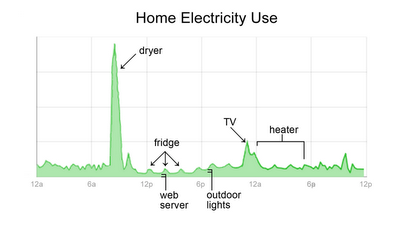
The problem with m.p.g., argues Richard Larrick, who wrote the article with his business-school colleague (and carpooling partner) Jack Soll, is that it leads consumers to significantly underestimate the gains in fuel efficiency that can be achieved by trading in very low m.p.g. vehicles — even for one that gets only a few more miles per gallon. Less detrimentally, m.p.g. also misleads people about the fuel savings achieved by moving from an ordinary family sedan into a Prius. Larrick emphasizes that his long-term goal is to get everyone into the most fuel-efficient vehicles that exist. But right now, he says, “as a national-policy question, the urgency is getting people out of the 14-m.p.g. vehicles.” And m.p.g. ratings aren’t the most useful prod, largely because the real significance of differences in m.p.g. is often counterintuitive. The jump from 10 to 20 m.p.g., for example, saves more gas than the one from 20 to 40 m.p.g. The move from 10 to 11 m.p.g. can save nearly as much as the leap from 33 to 50 m.p.g.
Consider the much-mocked S.U.V. hybrids, which seem to offer only incremental gains. Someone who trades in an all-wheel-drive Cadillac Escalade (14 m.p.g.) for an Escalade hybrid (20 m.p.g.) would save 214 gallons of gasoline over the course of 10,000 miles.
That’s about as much fuel as would be saved by two people currently driving 33-m.p.g. cars who switch to 50-m.p.g. hybrids, assuming everyone drives the same distance.
Consumers don’t get this. The Science article summarized three studies in which Duke students or participants in an online survey botched calculating m.p.g. trade-offs. In one case, 75 percent of the test subjects got the question wrong. When the calculations were reframed, however, using both m.p.g. and gallons used per 100 miles — 64 percent got it right. (Gallons per 10,000 miles further clarifies efficiency differences, the authors say.) Not long after the Science article appeared, the Energy Department and Environmental Protection Agency Web site fueleconomy.gov added a feature that lets users compare cars using gallons per 100 miles. Not a bad first step.
I remember a few years back, I was doing some calculations for a blog post using mpg and the numbers didn't make intuitive sense to me until I took the inverse of them, gmp, and then everything became a lot clearer. I completely agree with the authors (who have a new blog
The MPG Illusion) that using mpg leads to mistaken assumptions as to how to save fuel and that we need to switch over to gallons per mile.
| Miles Per Gallon | Gallons Per 10,000 Miles |
| 10 | 1,000 |
| 11 | 909 |
| 12.5 | 800 |
| 15 | 667 |
| 20 | 500 |
| 25 | 400 |
| 30 | 333 |
| 35 | 286 |
| 40 | 250 |
| 45 | 222 |
| 50 | 200 |
The chart above helps to show why mpg is misleading and why focusing on small increases to low mpg vehicles is much more important than large increases on higher mpg vehicles (a point that I discussed previously in my
Plug-in Hybrid vs. Tahoe Hybrid post). Going from 10 mpg to 11 mpg saves more gasoline (91 gallons) then going from 35 to 50 (86). Going from 10 to 12.5 saves more gasoline (333) then going from 25 to 50 (200). Going from 10 mpg to 20 saves more gasoline (500 gallons) then going from 20 to, well,∞ mpg.
Loyal Fat Knowledge reader Rebelfish
points out a cultural implication on the MPG vs GPM debate:
I've always thought the Europeans had it right w/ the L/100km vs our mpg (and not just because they use metric). The difference does, however, say something about our auto mentalities. The European indicator is conducive to the question "I'm going this far; how much fuel do I need?" In America on the other hand, it's "I've got this many gallons in my tank; how far can I drive?"
via
NY Times Mag and
ScienceDaily
Read More...
Summary only...
 Dell has a cool new Monitor Energy Savings Calculator for determining how much energy you will use/save with various monitors over their lifetimes.
Dell has a cool new Monitor Energy Savings Calculator for determining how much energy you will use/save with various monitors over their lifetimes.
























